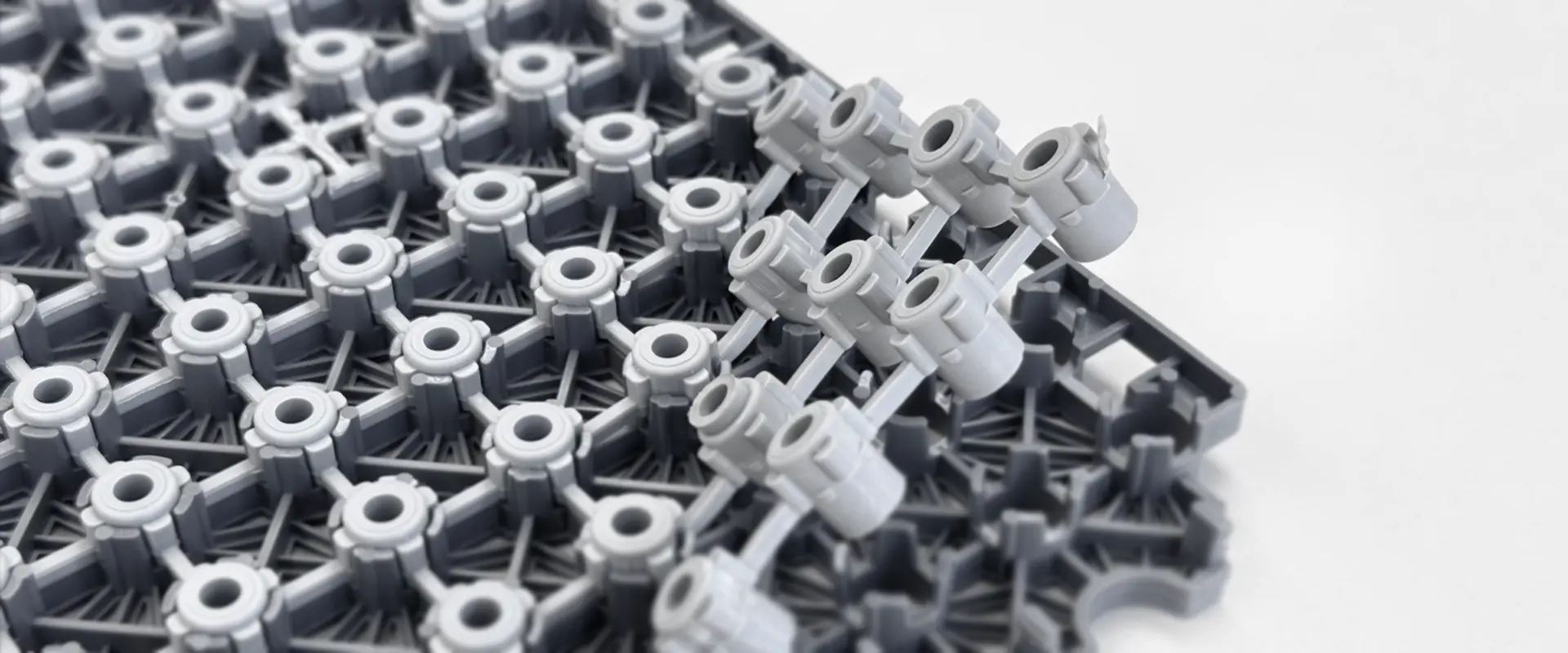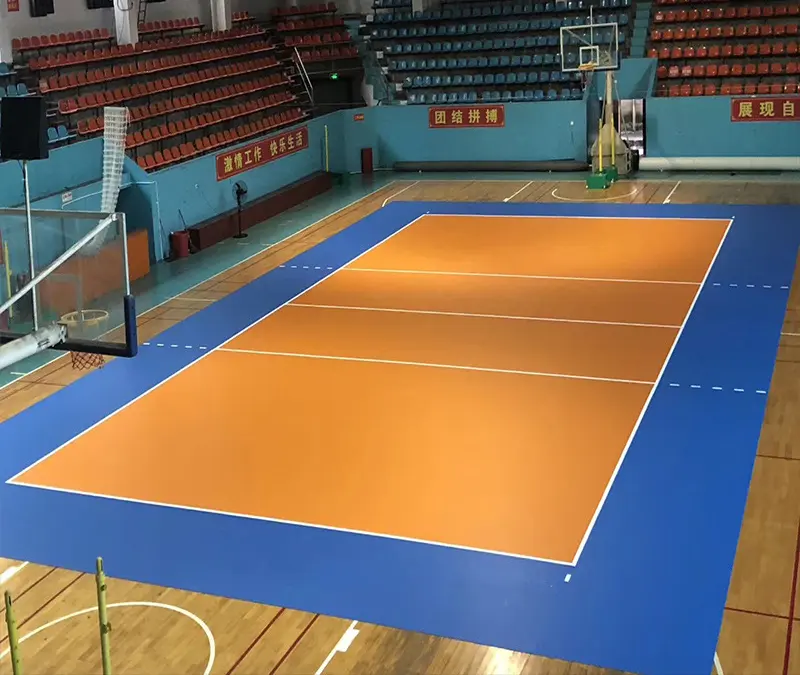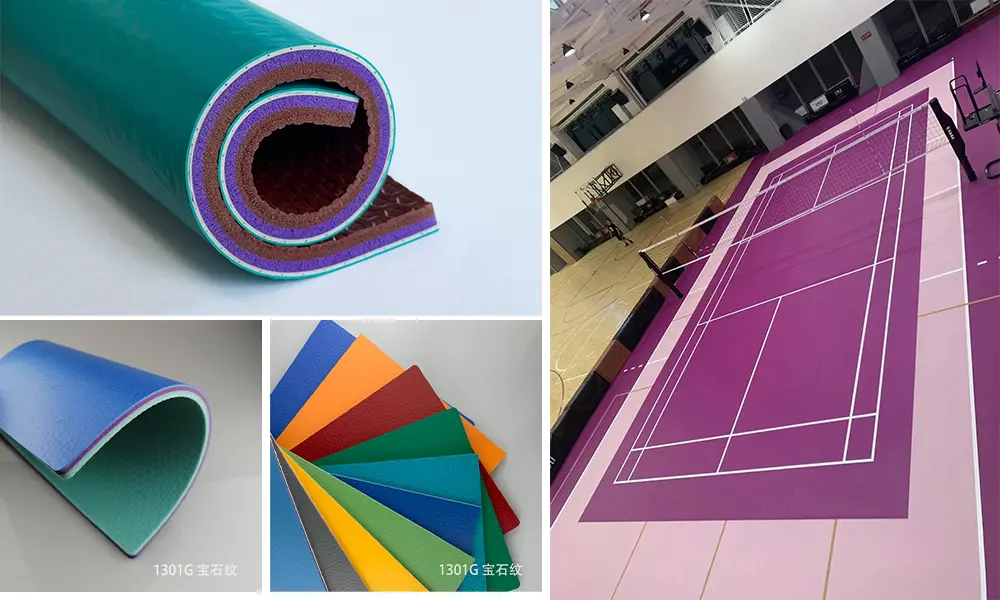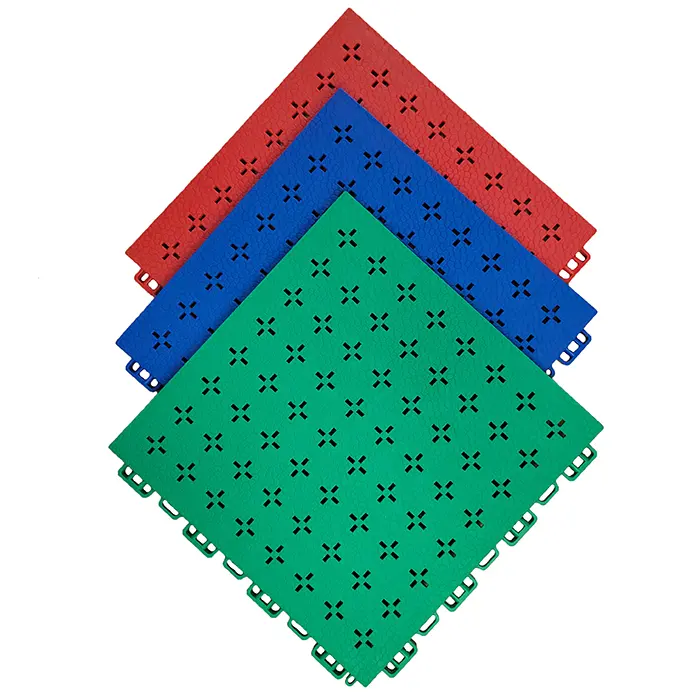Stable commitment to every leap, customized every flat
Blog


Stable commitment to every leap, customized every flat
Blog

Volleyball places high demands on floor elasticity, slip resistance, and durability. Floor materials for different settings (indoor and outdoor) exhibit significant differences in performance and suitability. The mainstream floor materials currently used in sports are PVC vinyl sports flooring and PP interlocking tiles, which are used for indoor and outdoor settings, respectively.

Indoor volleyball courts, which are not affected by natural environmental conditions, place greater emphasis on floor performance (elasticity, shock absorption), safety (anti-slip, wear resistance), and comfort. PVC flooring is currently the most widely used material.
Our volleyball flooring type:

Material Composition: Made primarily from polyvinyl chloride (PVC), with the addition of plasticizers and stabilizers, it is manufactured through a multi-layer composite structure (such as a wear-resistant layer, glass fiber layer, and foam cushioning layer), with a thickness typically ranging from 3.5 to 12 mm. As shown in the figure below, this is the structure of our volleyball flooring.
Performance Features:
Elasticity and Shock Absorption: The foam cushioning layer absorbs the impact force from athletes' jumps and landings, reducing joint injuries.
Anti-Slip Properties: The surface undergoes special texturing treatment (such as lychee pattern, Gem pattern, Leopard Pattern, etc.), ensuring athletes can move quickly without slipping while avoiding excessive friction that could disrupt movement continuity.
Durability: The wear-resistant surface layer (typically UV-treated) can withstand frequent friction from athletic shoes, with a lifespan of 5–10 years (depending on usage frequency).
Easy Maintenance: Waterproof and stain-resistant, daily cleaning requires only a mop; stubborn stains can be removed with a neutral cleaner.
Applications:
Professional volleyball arenas, school indoor sports halls, training centers, etc., particularly suitable for official competitions and high-intensity training.
Solid wood flooring: Used sparingly in high-end venues (such as professional leagues), it offers good elasticity but is costly, susceptible to water and moisture, requires regular maintenance, and has a lower cost-effectiveness ratio than PVC.
Rubber flooring: Excellent shock absorption, but heavy and complex to install, more suitable for weightlifting and other high-load sports, rarely used in volleyball courts.
Material Composition: Made from high-density eco-friendly PP or TPE plastic raw materials, molded into individual modules (common sizes: 30×30 cm or 50×50 cm) via injection molding. Modules connect via interlocking clips, enabling quick installation without adhesive, and can be directly laid on flat cement or asphalt surfaces. As a 20-year-old sports flooring manufacturer, we have a fully equipped large-scale production line for plastic interlocking flooring:
Weather resistance: Resistant to UV aging, maintains stability under temperature fluctuations from -30°C to 60°C, and remains performance-stable after prolonged exposure to sunlight and rain.
Drainage: The bottom of the modules features a perforated structure for rapid drainage during rain, preventing water accumulation that could affect usage.
Anti-slip and elastic: The surface has anti-slip textures, and the modules themselves have a certain degree of flexibility, providing basic shock absorption (though not as effective as indoor PVC, it is superior to cement floors), reducing sports injuries.
Installation and maintenance: Modular design allows for easy installation and disassembly; damaged modules can be replaced individually. No special maintenance is required on a daily basis; simply clean the surface of dust and debris periodically.
Environmental Friendliness: Made from food-grade PP material, odor-free and formaldehyde-free, compliant with outdoor environmental standards.

Outdoor volleyball courts, beach volleyball (some non-sand surfaces), community fitness areas, school playgrounds, etc., suitable for recreational use and non-professional competitions.
For indoor volleyball courts: prioritize PVC sports flooring to ensure athlete performance and safety.
For outdoor recreational or training areas: you can also choose PVC flooring with a PU coating or interlocking floor panels, balancing durability and cost-effectiveness.
We offer a variety of sports flooring materials for different scenarios and are one of China's largest manufacturers. You can request product catalogs or factory-related videos at any time. We look forward to collaborating with you!
Leave Your Message
Message us for free samples and quotes!